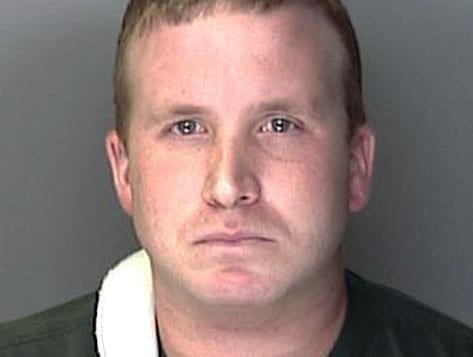Suffolk County police, alongside the Drug Enforcement Administration and the Office of the Special Narcotics Prosecutor of New York City, united to bust a heroin ring operating on Long Island, officials announced on Wednesday.
A wiretap investigation, conducted by the Suffolk County District Attorney’s office and county police narcotics unit, lead to the arrests and indictment of 14 individuals involved in the ring, including alleged leaders Winston Rose, 35, of Deer Park and his brother, Uriel Rose, 31, of Bay Shore. Residents from Rocky Point, Coram and Northport were also charged.
According to District Attorney Tom Spota, between the months of April and May, Robert Maldonado, 28, of the Bronx, allegedly delivered more than 20,000 bags of heroin from the borough to the Rose brothers on Long Island. Kenny Gonzalez, of Bay Shore, also supplied the brothers with heroin for their drug operation.
“The source of the heroin that we see flowing into Suffolk is primarily coming from the City of New York and more often than not, from the Bronx,” Spota said following the arraignments on Wednesday.
The Rose brothers were indicted for operating as major traffickers, as investigators claim they sold heroin and cocaine in Suffolk communities and elsewhere from around Dec. 4, 2014 to June 4, 2015. The brothers sold around 325 to 500 bags daily for $10.
Phil Murphy, the attorney representing Winston Rose, said he did not see an issue with his client’s business when he visited. He also said his client had rental property and rented available gyms among other materials for the business.
Calls to attorneys for Uriel Rose, Maldonado and Gonzalez were not immediately returned.
Winston Rose was on parole for possession of a weapon at the time of his arrest. In addition, he has nine prior felony and misdemeanor convictions while his brother has six prior misdemeanor convictions. Four of these convictions were for drugs.
According to Spota, the brothers posed as businessmen and allegedly used an event and catering business based out of Deer Park as a front to peddle drugs.
The brothers, as well as Desiree Dietz, 33, of Rocky Point; Emily Ruiz, 24, of Deer Park; Daniel Demaio, 23, of Northport; James Lantero, 41, of Bay Shore; Edward Molewski, 47, of East Islip; Charles Hennings, 41 of Coram and Dillon Noseda, 26, of Northport were arraigned in Riverhead as well. The individuals, along with five others, have been charged with conspiracy in the second degree, a Class B felony in the state of New York.
Noseda is accused of being a major seller of heroin in the Village of Northport and the surrounding communities. Ian Fitzgerald, Noseda’s attorney, said his client denied being a major seller in the case. In a phone interview, he said his client only knew Winston Rose for about two months.
Attorney information for Dietz, Ruiz, Demaio, Lantero, Molewski, and Hennings was unavailable.
“Somebody and some day they are all going to know that they’re never going to see the light of day if they’re convicted,” Spota said.
Bail for Winston Rose was set at $3 million cash or $6 million bond, while Uriel Rose’s bail was set at $2 million cash, or $4 million bond.
If convicted as major traffickers, the Rose’s face a minimum sentence of 15 to 25 years, to a maximum life sentence, according to Spota.
Special Narcotics Prosecutor Bridget Brennan said solving individual cases such as this case, might not “end the crisis,” but have a significant local impact.
According to Special Agent James Hunt, of the DEA, heroin related deaths have increased 172 percent from 2003 to 2013.
Spota attributes their success to the collaborative efforts of all law enforcement officials who were involved. Brennan agreed and said that collaboration will help overcome the distribution of heroin.
“We are now facing a huge heroin problem,” she said. “The only way to beat it is the way we’re doing it. Step by step case by case joining hands and not just us alone but with the collaboration of many others.”










